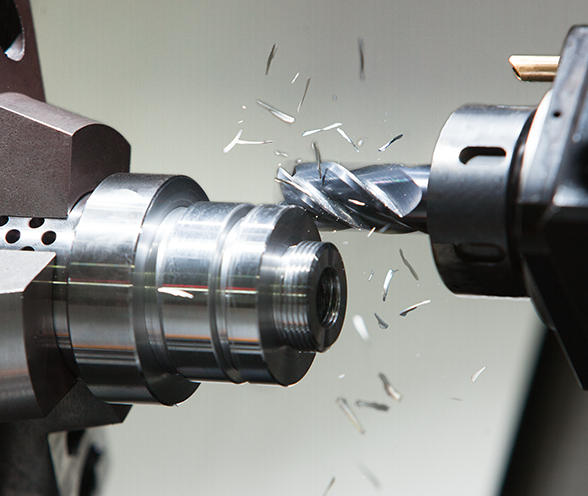THE BENEFITS OF A PROPER SPINDLE WARM-UP ROUTINE
What’s the value of sacrificing production time to warm-up a spindle? There are several reasons to institute a warm-up routine, but for starters, it’s the same reason athletes warm-up their muscles before competition. Spindles, just like muscles, work best when they operate at optimum temperatures.

PREVENT WEAR AND ENSURE ACCURACY
When a spindle sits idle (whether it’s a grease or oil-air spindle), gravity generally takes the lubrication to one spot where it rests until the next start-up. This means when you start your program without warming-up, the first revolutions of the spindle may be dry or unevenly lubricated, which can cause spindle wear and damage.
Having the spindle warmed up and all the bearings and raceways properly lubricated before you make the first cut will help reduce loads and prevent wear of the bearings. While bearing wear won’t damage the spindle to the point of failure, it will increase the load over time.
In the machining process, cold and warm temperatures affect accuracy. The spindle and components are cold when a machine sits idle, but as the machine warms up, their length and size increase. Thermal growth has already taken place in a warm spindle which means from the first part you run to the last, the spindle size will be the same, ensuring part accuracy.
CREATE A WARM-UP ROUTINE
An easy way to create a warm-up routine is to use the calendar timer option on your machine to start the function. This way, the warm-up process can be scheduled to start before you even walk through the shop door.
Your local Okuma branch can give you advice on implementing a spindle warm-up program or help craft a solution for your specific machine. They can also assist you with using the warm-up function if you already have it on your machine.
Be sure to take the time to perform this easy task. Just a few minutes of warm-up time will protect your machine tool investment and boost accuracy.
Extract from Okuma America Website
Article by Chris Heeg
Board Repair Supervisor
14/12/2020